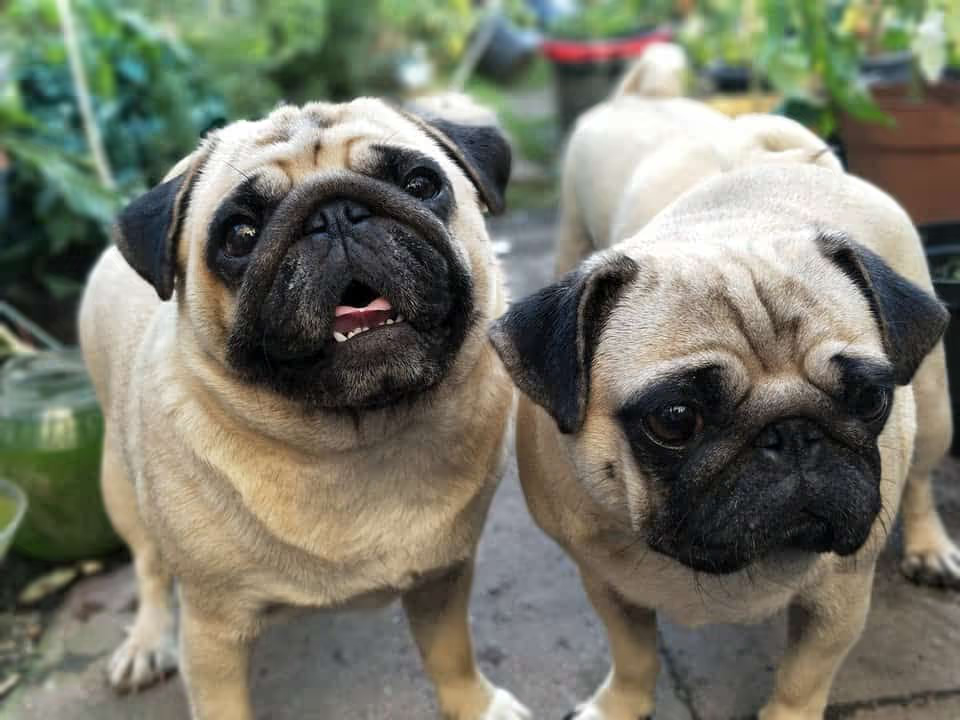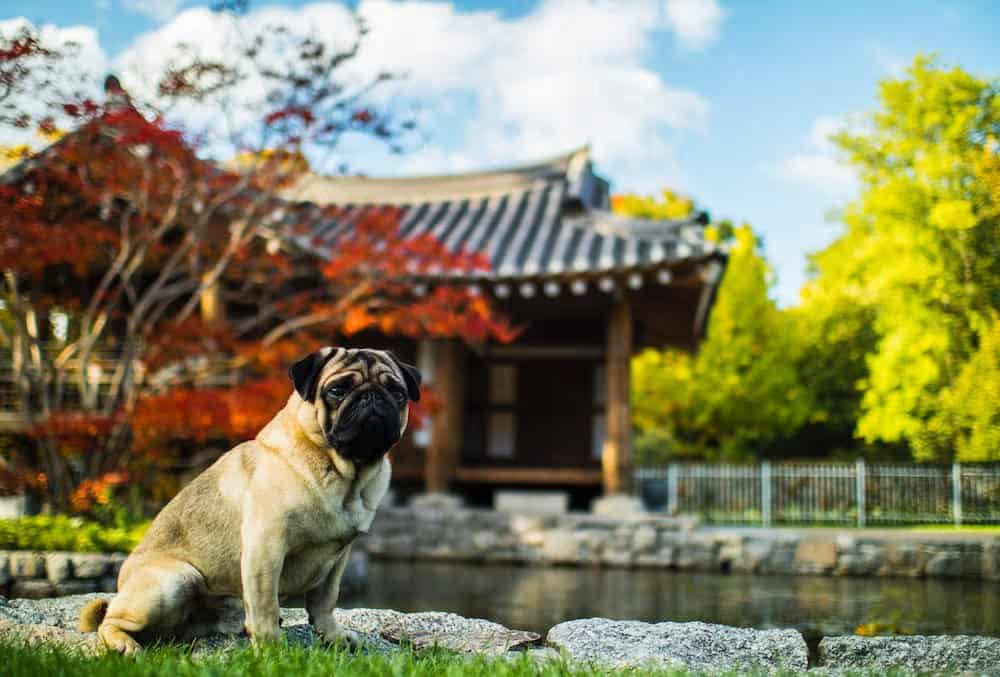For the Purrbabies


Get to know fun tidbits and the surprising history of this beloved breed.

With their cute faces and stubby legs, the humble pug is an unassuming breed. However, beneath that wrinkly surface is a fascinating and ancient creature jam-packed with intrigue and unexpected qualities. First, though, it’s worth looking at where the name “pug” comes from in the first place.
Some folks point to the Latin word “pugnus” which refers to a balled-up fist. They believe that the forehead wrinkles of young pugs resemble the fingers of a fist, and “pug” is not far off from “pugnus”. Others think that Puck, the mischievous fairy of Shakespeare’s A Midsummer Night’s Dream might be the namesake of the famously impish breed. Either through a typo or just how words change over time, “Puck” evolved into “pug”. However, the most popular theory is that pugs are named after marmoset monkeys, which are often referred to as pug monkeys. With their short snouts and big, dark eyes, the resemblance is quite striking.

While many other dogs were bred to hunt foxes, protect livestock, or keep a watchful eye over the homestead, the pug was exclusively intended to be an adorable lapdog. Thousands of years ago, the earliest pugs were bred by Chinese nobility alongside other ancient breeds like the lion dog and Pekingese as companions and status symbols. In fact, this dog was bred to be as wrinkly as possible with early breeders even attempting to get the forehead creases to form the Chinese character for “prince”. When you look at the pug’s iconic squished face, you are looking at pure prestige and distinction.

For hundreds of years, pugs have been the companions of famous rulers and royalty like Queen Victoria and Josephine Bonaparte, the wife of the legendary Napoleon. Josephine’s pug, Fortune, even carried messages to Josephine’s first husband while she was imprisoned during the Reign of Terror. The little pug, with the breed’s characteristic tenacity, is known for biting Napoleon the Conqueror’s hand. Nowadays, celebrities from all walks of life have owned pugs. Hard rock icon Rob Zombie, glitzy heiress Paris Hilton, and internet personality PewDiePie can all agree that pugs make for charming pets.

Generations of royal affection and constant coddling seems to have infused this breed with a particular haughtiness and stubbornness. While this attitude may be a touch annoying when it comes time for some training, the snorts and grumbles these little guys utter only adds to their charm. Once they are content and happy, though, they are very loving and loyal dogs.

Perhaps based on their tendency to huff about like old curmudgeons or because they are seldom in the laps of Chinese royalty anymore, a bunch of pugs resembles the reaction most of us have to a Monday morning come all too soon.

Those smooshed little faces are cute and beloved, but they come with some considerable downsides. Pugs have plenty of breathing problems because of those stubby noses. On top of that, they also have shallow eye sockets, which means that, on occasion, their eyes can pop out a little bit. They won’t be dangling free, fortunately, but the eyes can bulge out too much, leading to eye infections and other vision problems. Sometimes, the hairs on the short nose or facial rolls can also come in contact with the eye balls. Keep your eyes open for this dog’s eyes being a little too open.

A Catholic offshoot faction of the German freemasons once used the pug as the symbol of their clan. They pointed to the breed’s loyalty and regal lineage as motivation for the choice and soon became known as the Order of the Pug. The dedication to the dog went well beyond the name, though, as new initiates reportedly had to scratch at the door three times to be let in and then don a brass collar as part of the welcoming ceremony. The new recruits were then blindfolded and led around the room while existing members barked to test their resolve. A book published as a tell-all revealed these unusual traditions, and because of these rumors, the Order of the Pug dissolved soon afterward.








